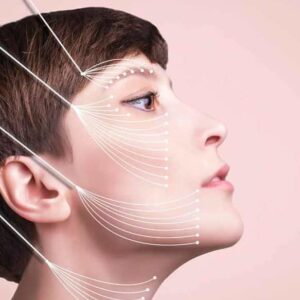Description
Familiarity with treatment
Earlobe reduction is a plastic surgery procedure aimed at improving the appearance of drooping, overly large, or pendulous earlobes. It is performed to enhance facial symmetry and proportions. The procedure is typically done on an outpatient basis and provides immediate and permanent improvements to the appearance of the earlobe 1.
Here is a general overview of the earlobe reduction procedure:
Anesthesia: The procedure is usually performed under local anesthesia, meaning you will be awake but the area will be numbed. This helps minimize discomfort during the surgery.
Incisions: The surgeon will make incisions in the earlobe. The location and length of the incisions may vary depending on the specific case and desired outcome. The incisions are typically made in inconspicuous areas to minimize visible scarring.
Tissue Removal and Reshaping: Excess skin and tissue are carefully removed from the earlobe. The remaining tissue is then reshaped to create a more aesthetically pleasing contour. The surgeon may use various techniques to achieve the desired result, such as suturing or cartilage reshaping 2.
Closure: Once the necessary adjustments have been made, the incisions are closed using sutures. The sutures may be dissolvable or require removal at a later follow-up appointment, depending on the surgeon’s preference.
Recovery: After the procedure, the earlobes will be bandaged to protect the surgical site. You will receive specific instructions on how to care for the bandages and incisions during the initial healing period. It’s important to follow these instructions carefully to promote proper healing and minimize the risk of complications.
Results: The results of earlobe reduction are immediate and permanent. The procedure aims to create a more balanced and proportionate appearance of the earlobes, enhancing overall facial aesthetics.
Who is it suitable for?
Earlobe reduction surgery, also known as loboplasty, is suitable for individuals who are bothered by the appearance of drooping, sagging, pendulous, or overly large earlobes. Here are some factors that may make someone a suitable candidate for earlobe reduction:
Age: Earlobe reduction can be performed on children over the age of five, teenagers, and adults. It is important for younger patients to have reached a certain level of ear development before considering the procedure.
Good Health: Candidates for earlobe reduction should be in generally good health. It is important to disclose any pre-existing medical conditions or medications you are taking to your surgeon during the consultation.
Realistic Expectations: It is important to have realistic expectations about the outcome of the surgery. Candidates should understand the potential results and limitations of the procedure. Consulting with a qualified plastic surgeon will help you understand what can be achieved through earlobe reduction.
Earlobe Concerns: Suitable candidates for earlobe reduction may have elongated or stretched earlobes due to aging, wearing heavy earrings, or other factors. The procedure aims to reshape and resize the earlobes to create a more balanced and proportionate appearance.
Absence of Severe Deformities or Keloid Scarring: While earlobe reduction can address certain earlobe concerns, it may not be recommended for individuals with severe deformities or those prone to keloid scarring. It is important to discuss your medical history and any concerns about scarring with your surgeon during the consultation.
Who is it not suitable for?
While earlobe reduction surgery, or loboplasty, can be an effective procedure for many individuals, there are some cases where it may not be suitable. Here are a few factors that may make someone not suitable for earlobe reduction:
Underlying Health Issues: Individuals with certain underlying health conditions may not be suitable candidates for earlobe reduction. It is important to disclose any pre-existing medical conditions or medications you are taking to your surgeon during the consultation. Your surgeon will evaluate your overall health and determine if it is safe for you to undergo the procedure.
Active Infections or Skin Conditions: If you have an active infection or skin condition in the earlobe area, such as an untreated earlobe infection or eczema, it may not be appropriate to undergo earlobe reduction until the condition is resolved. Surgery in the presence of infection or inflammation can increase the risk of complications and hinder proper healing.
Severe Deformities or Anatomical Issues: In cases where there are severe deformities or anatomical issues with the earlobe, such as congenital malformations or complex earlobe abnormalities, earlobe reduction surgery may not be suitable. It is important to consult with a qualified plastic surgeon who can assess your specific situation and determine the best course of action.
Unrealistic Expectations: It is important to have realistic expectations about the outcome of the surgery. While earlobe reduction can improve the appearance of the earlobes, it may not completely correct all aesthetic concerns or achieve perfection. It is important to discuss your goals and expectations with your surgeon during the consultation.
Keloid or Hypertrophic Scarring Tendency: Individuals who have a tendency to develop keloid or hypertrophic scars may not be suitable candidates for earlobe reduction. This is because the surgery involves incisions, which can potentially lead to more noticeable or problematic scarring in those with a predisposition to abnormal scarring.
Advantages
Earlobe reduction surgery, or loboplasty, offers several advantages for individuals who are bothered by the appearance of drooping, sagging, pendulous, or overly large earlobes. Here are some of the benefits associated with earlobe reduction:
Improved Aesthetics: Earlobe reduction surgery aims to create a more balanced and proportionate appearance of the earlobes, enhancing overall facial aesthetics. It can help address concerns related to elongated or stretched earlobes, creating a more pleasing contour.
Enhanced Self-Confidence: Many individuals with prominent or disproportionate earlobes may feel self-conscious about their appearance. Earlobe reduction surgery can help improve self-confidence and self-esteem by providing a more harmonious and aesthetically pleasing earlobe shape.
Correction of Earlobe Abnormalities: Earlobe reduction surgery can correct earlobe size abnormalities due to genetics, the aging process, or trauma (such as heavy earring use). It can reshape and resize the earlobes to create a more natural and proportionate look.
Minimally Invasive Procedure: Earlobe reduction surgery is typically a minimally invasive outpatient procedure. It is performed under local anesthesia, meaning you will be awake but the area will be numbed. The procedure generally involves making incisions, removing excess tissue, and reshaping the earlobes. The recovery time is usually relatively short compared to more extensive surgeries.
Quick Recovery: Following earlobe reduction surgery, most patients can return to their normal activities relatively quickly. While there may be some discomfort and swelling initially, the recovery period is generally well-tolerated, and patients can resume their daily routines within a few days. Strenuous activities may be resumed after a short period of time, as advised by the surgeon.
Complications
Earlobe reduction surgery, or loboplasty, is generally considered a safe procedure. However, like any surgical procedure, there are potential complications and risks involved. Here are some of the complications that may occur:
Scarring: Scarring is a common side effect of any surgical procedure, including earlobe reduction. Most patients experience minimal scarring that fades over time and becomes less noticeable. However, in some cases, individuals may develop hypertrophic scars, which are raised and thickened scars. Proper scar management techniques can help minimize the appearance of scars.
Infection: Although rare, there is a risk of infection following earlobe reduction surgery. It is important to follow proper postoperative care instructions, keep the surgical site clean, and report any signs of infection, such as increased redness, swelling, or discharge, to your surgeon.
Bleeding: Some degree of bleeding is expected during and immediately after the surgery. However, excessive bleeding can occur in rare cases. Your surgeon will take precautions to minimize the risk of bleeding during the procedure, and you will be provided with instructions on how to manage any postoperative bleeding.
Asymmetrical Appearance: While every effort is made to create symmetrical results, there is a possibility of slight asymmetry between the two earlobes following surgery. This can be addressed through revision surgery if necessary.
Discomfort and Swelling: It is normal to experience some discomfort and swelling after earlobe reduction surgery. However, these symptoms are typically temporary and can be managed with pain medication and cold compresses.
Numbness: Temporary numbness or altered sensation in the earlobe area may occur after the surgery. This is usually temporary and resolves as the healing process progresses.
preoperative care
Preoperative care for earlobe reduction surgery involves several important steps to ensure the best possible outcome. Here are some key aspects of preoperative care:
Consultation with a Plastic Surgeon: The first step is to schedule a consultation with a qualified plastic surgeon who specializes in earlobe reduction. During this consultation, you will discuss your goals, medical history, and any concerns you may have. The surgeon will evaluate your earlobes, provide recommendations, and explain the procedure in detail.
Medical Evaluation: Your surgeon may conduct a medical evaluation to assess your overall health and determine if you are a suitable candidate for the procedure. This may involve reviewing your medical history, performing a physical examination, and discussing any pre-existing medical conditions or medications you are taking.
Discussion of Expectations: It is important to have a clear understanding of what to expect from the surgery. Your surgeon will discuss the potential outcomes, limitations, and risks associated with earlobe reduction. This will help you set realistic expectations and make an informed decision.
Preoperative Instructions: Your surgeon will provide specific preoperative instructions that you should follow closely. These instructions may include:
Medication: You may be advised to avoid certain medications, such as blood thinners or nonsteroidal anti-inflammatory drugs (NSAIDs), as they can increase the risk of bleeding. It is important to inform your surgeon about all medications, supplements, and herbal remedies you are taking.
Smoking: If you are a smoker, you may be advised to quit smoking or at least refrain from smoking for a certain period before and after the surgery. Smoking can impair healing and increase the risk of complications.
Fasting: You may be instructed to fast for a certain period before the surgery, typically starting from midnight the night before the procedure. This is to ensure your stomach is empty during the surgery and reduce the risk of complications related to anesthesia.
Arrangements: Make arrangements for someone to drive you home after the surgery, as you may be under the influence of anesthesia and unable to drive.
Preparation for Recovery: Before the surgery, you should prepare for the recovery period. This may include arranging for time off work, ensuring you have someone to assist you at home during the initial recovery phase, and gathering any necessary supplies recommended by your surgeon, such as bandages or ointments.
Postoperative care
Postoperative care following earlobe reduction surgery is crucial for proper healing and optimal results. While specific instructions may vary depending on the surgeon and individual circumstances, here are some general postoperative care guidelines:
Dressing and Wound Care: Your surgeon will provide instructions on how to care for the surgical site. This may involve keeping the dressing dry and clean, applying topical antibiotic ointment, and changing dressings as directed. It is important to follow these instructions to minimize the risk of infection and promote proper healing.
Pain Management: You may experience some discomfort or pain after the surgery. Your surgeon may prescribe pain medication or recommend over-the-counter pain relievers to manage any discomfort. Follow the prescribed dosage and instructions for pain medication.
Swelling and Bruising: Swelling and bruising are common after earlobe reduction surgery. Applying cold compresses or ice packs to the area can help reduce swelling and alleviate discomfort. Your surgeon may provide specific instructions on when and how to use cold compresses.
Activity Restrictions: Your surgeon will provide guidelines on activity restrictions during the initial recovery period. It is important to avoid strenuous activities, heavy lifting, and activities that may put pressure on the earlobes. Follow your surgeon’s instructions regarding when you can resume normal activities.
Follow-up Appointments: Your surgeon will schedule follow-up appointments to monitor your healing progress. During these appointments, the incision sites will be examined, and any necessary adjustments or further instructions will be provided. Attend all scheduled follow-up appointments to ensure proper healing and address any concerns.
Scar Care: Your surgeon may provide instructions on scar care to minimize the appearance of scars. This may include applying topical silicone gel or sheets to the incision sites, avoiding sun exposure, and keeping the scars moisturized. Follow your surgeon’s recommendations for scar care.




Reviews
There are no reviews yet.